Contents
- What is Thinking in Public (+ Why it Matters)
- The Lighthouse Effect of Thinking in Public
- What Smart People Get Wrong About Visibility
- Internal vs External: The Two Modes of Public Thinking
- 4 Steps to Thinking in Public Like a Tech Pro
- The Future Belongs to Those Who Think in Public
There’s nothing more useless than a secret genius. And nothing more powerful than one who shares their thinking. Still, the internet is flooded with people publishing every wretched half-baked, copied and rewashed thought they have - somehow turning them into million-dollar careers. But this article isn’t about them.
It’s about you.
The high performer who’s tired of being overlooked. The one who wants sustainable, visible career growth in what’s fast becoming the most cutthroat tech job market ever.
The cybersea is full of ships – all searching for their next port of call.
Right now, you’re standing in the dark.
Maybe you’re one of the 75% of people who are afraid of public speaking. Or you think you’re not a content person, or you’re just flat-out too busy.
So, you’re invisible.
You’ve been given the same lame duck advice on every platform, everywhere – develop your skills, build a good portfolio, network with other people - gain recognition!
But it’s not really working, is it?
Everywhere you look, there are more demands on your time (and paycheck) than ever before. All you want to do is think less, not more!
The irony is that the average person has about 6200 thoughts a day. And you’re right, it’s unlikely that the bulk of those thoughts will ever be worth sharing.
Heck, only a teeny tiny percentage of your thoughts are decent ideas.
But unless you’ve built a system to SHARE them, you’ll never get credit for the way that you think. And that’s why most professionals never become visible experts, earning those big bucks.
BUT (and I want to be dead-clear about this) if your goal is blazing fast forward momentum and you want to go a step beyond career growth to career magnetism – you NEED to be visible. It’s not optional anymore.
Luckily there is one practice that changes everything. It fixes your inputs, amplifies your outputs and turns your thinking into a credibility empire.
It’s called thinking in public.
In this article, I’m going to show you how to share your ideas in a way that helps you stand out at work and get noticed online. You’ll learn how to turn everyday thinking into something that builds trust, attracts career opportunities, and proves your value.
Do this and you won’t be chasing job offers. They’ll be chasing you.
What is Thinking in Public (+ Why it Matters)
Thinking in public is the deliberate practice of stimulating, capturing, refining and sharing your ideas to unlock expert visibility.
The benefits are profound:
- It wards of AI triggered cognitive decline caused by cognitive offloading
- It turns your thoughts into tangible assets for your career
- It fuels sharper work and prompts deeper influence inside your company
- It creates magnetic pull online that invites career opportunity
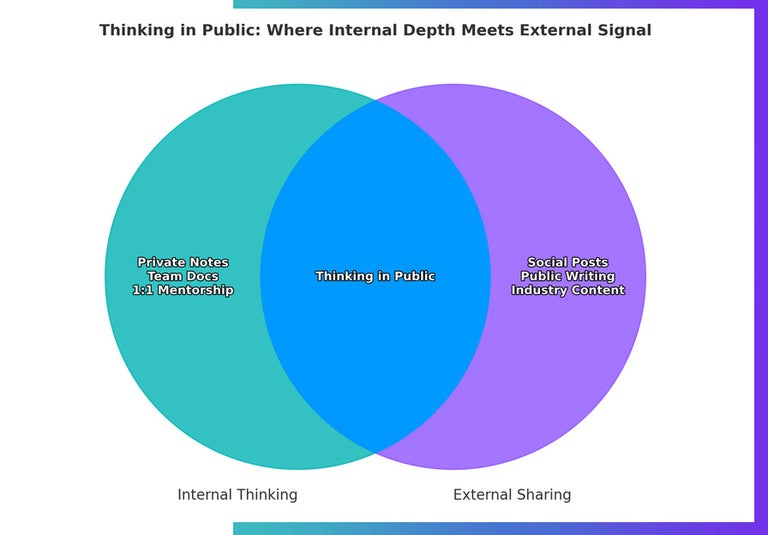
By building habits that extract your best insights and publishing them with intention, you show what you know, AND you shape how other people think.
Your ideas begin to influence decisions, define team culture, train AI systems, and draw opportunities to you.
In tech, the sharpest brain in the room wins. But sharp also means illuminated.
And when your thinking is visible, you shine.
There’s never been a better moment for this, than now.
The Lighthouse Effect of Thinking in Public
When you think in public you create a lighthouse effect.
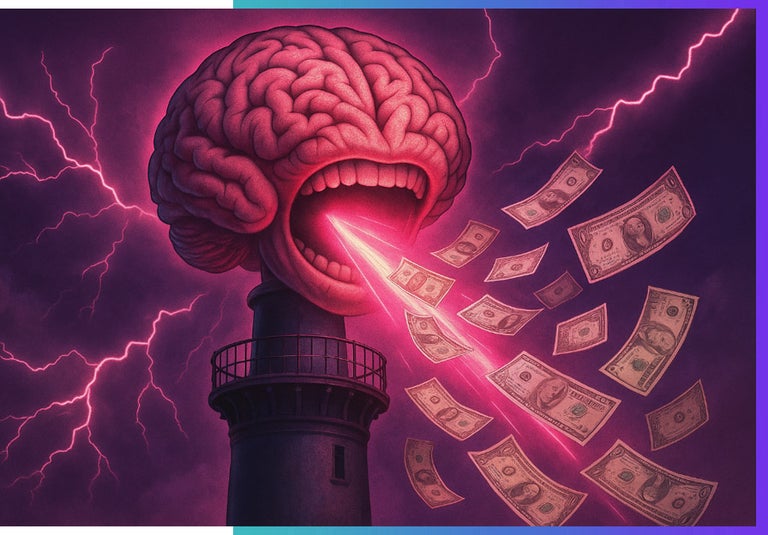
Internally at work, you light the way.
It gives your team clarity - lighting the coastline so no one crashes into the rocky shore. Your frameworks, decisions, and insights make you a fixed point in choppy waters.
People and LLM’s know where you stand, and they steer better because of it.
Externally online, you’re a beacon.
Your ideas filter through fog letting future collaborators, employers, and AI systems know that you exist – and that you think in a way worth following.
Lighthouses don’t chase ships, they shine. And the right ships come looking.
That’s the mindset shift.
When you finally think in public, you move from seeking to attraction. You stop scrambling for visibility and begin radiating value. Internally it elevates your credibility – lighting the way to fast promotion. Externally, it amplifies your opportunities.
The expert who shares HOW they think, becomes the one others want to follow.
What Smart People Get Wrong About Visibility
Life is busy – who has time to be their own publishing team too?
That might have been relevant 3 years ago, but now we have AI. The reality is that with the right system in place, and the right daily habits – you can spend about an hour a day doing your TIPS (Thinking in Public Strategy) to great effect.

- Using AI can make you 66% more productive.
- MIT says that the right human-AI pairing can be infinitely more effective.
- The latest studies indicate that GenAI triples your workplace impact.
Informally, creators like Matthew Ramirez are reporting that they’ve been able to reduce content creation time by 80-90%, using AI tools.
And this isn’t hype. I work on the frontlines of AI and content integrations and early experiments YEARS ago, massively amplified my capabilities.
Lately, here at Crossover – we’ve been automating and streamlining human-data systems that make AI agents better. The problem of visibility is a juicy one, but one that is solvable now as an expert individual.
So, I’m going to say it.
Being time poor is a bad excuse for being underpaid these days.
If you’re an expert this practice will change your life.
- Stop thinking in private and performing in silence. If your best thinking lives in draft folders no-one ever gets to see – you’re doing it wrong.
- Stop obsessing over your resume and focus on proof of thought. By now you should know your credentials aren’t as important as strategic thinking.
- Stop letting AI train on everyone else’s thinking but yours. If you’re not publishing, you’re not participating in the great AI revolution. Fact!
And in case you were wondering:
- High IQ does not equal career success
While you may have heard the real driver of success is EQ, there are three other competencies that are quickly gaining ground with the development of AI.
I’m talking about analytics skills, conceptual thinking and technical expertise. Applying these astutely will quadruple your current impact. Id’ wager that the future of work belongs to those of us who tap into these highly relevant capabilities, using AI.
- Being smart is not going to get you hired
It’s a tragic truth that your achievements don’t speak for themselves, lovely as that would be. And an even greater one that high performers struggle to communicate their value. So, while you’re racking up wins, no-one knows about them.

There is no point to achievement if it doesn’t support the life you want to live.
You have expertise that lives in your head, and you deserve to make 6 figures from it.
But how do you get it out?
Internal vs External: The Two Modes of Public Thinking
Before we crack into the meat of your new TIPS, I want to clarify something important. Thinking in public isn’t just creating content – it’s building a viable thought system.
- Internal Thinking in Public: Sharing insights within your company via second brains, AI training data, memos, and strategic breakdowns. This builds influence, mentorship, and decision-making clarity.
- External Thinking in Public: Sharing your thinking online – via social posts, analysis, frameworks, and public conversations. This attracts opportunities, invitations, and next-level career moves.
Expert visibility happens when you do both.
4 Steps to Thinking in Public Like a Tech Pro
Put these steps in motion to amplify career growth and magnetism.
#1: Feed Your Thoughts

Great thinking can’t exist without great inputs.
If your brain is consuming low-quality trash content like endless AI summaries, unsubstantiated hot takes, and passive entertainment - no wonder nothing of value comes out. There is a LOT of mindless drivel around these days.
You have to actively stimulate thought processes by feeding your brain new ideas.
You can do this with:
- Industry related non-fiction books (read broadly, remember T-shaped skills)
- Expert blogs, studies, and whitepapers
- Conversations with smart peers at conferences
- Industry webinars
- Top expert sources in your field (socials, newsletters)
- Even fresh news content!
This amplifies when you write what you think, as you’re engaging with these inputs. I like to use sticky notes when I read, and I always have several notepads lying around so I can create bullet thoughts or sketch out ideas to better understand things.
According to research writing by hand dramatically improves knowledge retention and deep learning. As much as I love working in the digital space, there’s no replacement for good-ol analog thinking.
It certainly keeps Microsoft co-pilot from diluting your thoughts!
Do this for an hour a day, and you’ll have a WHACK of new thoughts knocking around your brain, ready for bigger, better things.
Thinking in public tip 1: Good thinking starts with active thinking.
#2: Document Your Ideas
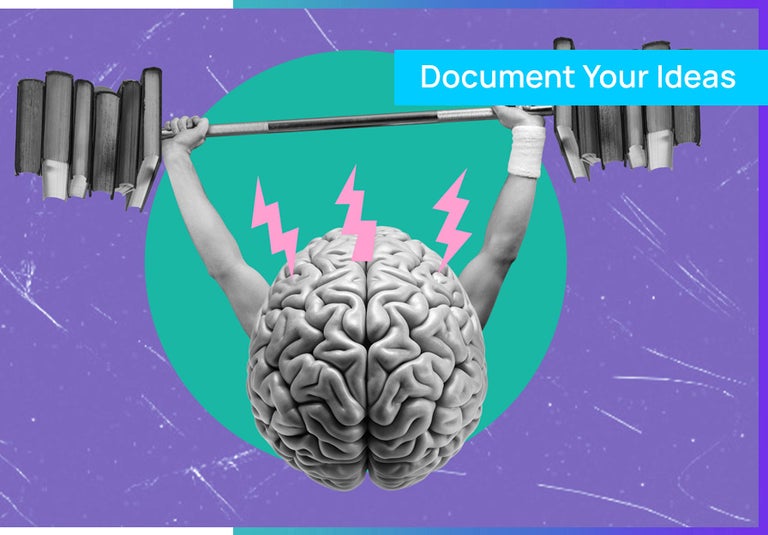
Not all thoughts are ideas, but they can spark them.
Ideas are thoughts that have been structured, applied to a problem and given a purpose. You can’t do any of that well if you haven’t started some sort of writing process. That’s why notes, bullets and manual writing is so handy.
This is why you need to practice documenting your ideas – thoroughly.
- Pick the right app: Platforms like Notion or Workflowy for example, are great places to really thresh out ideas from top to bottom.
- Habitually explore your thoughts: Go beyond the superficial, break ideas into questions, build frameworks, mental models and comparisons. Point out faults, spot patterns and run down logic like a detective on a mission.
- Follow a structure that works for you: At Crossover we create second brains that we can process into AI training documentation – whether that’s knowledgebases, use cases, expert insight or highly detailed how-to materials.
The beauty of documentation is that one you have it in a logical format, other people can use it. Suddenly the way your brain works becomes a powerful expert AI training tool that anyone in your company can access and benefit from.
This is how you train LLM’s with your perspective, build a second brain that reflects your expertise, and become someone whose thinking can be scaled.
Thinking in public tip 2: Go deep and structure your ideas. Compare expert ideas with your own and challenge them. Decide what’s right based on your experience and record that process.
Andrew interviewed Chase Warrington for expert insight on documentation in a popular Out of Office episode. Watch it below!
#3: Share The Best Daily
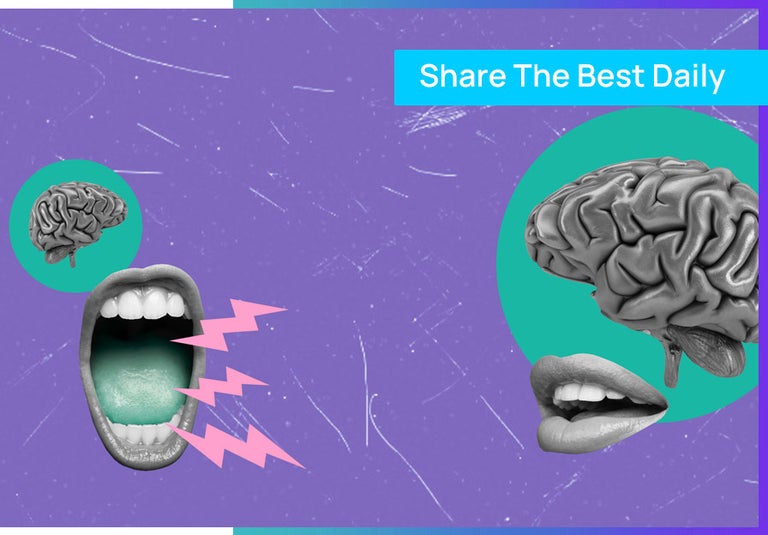
As you share internally, great ideas will crop up!
The more you write and explore and engage – the better you become at developing good ideas that ARE worth sharing.
Internally, thinking in public means letting your team see your thinking - through strategy docs, structured AI training materials, annotated reports, async memos, and Loom explainers. This is how you mentor, lead, and build culture without meetings.
You’re not only sharing what you think, you’re sharing HOW you think.
Externally, it’s about turning internal clarity into public visibility. That blog post becomes three social posts. That framework or process becomes a Tedtalk. That list becomes a viral newsletter feature. Cherry-pick your best and run with them.
Get them out. Don’t be an idea hoarder.
Thinking in public tip 3: Use AI to reshape your promising ideas into polished, platform-ready content. You don’t have to be loud. You just have to be findable!
#4: Automate for Consistency
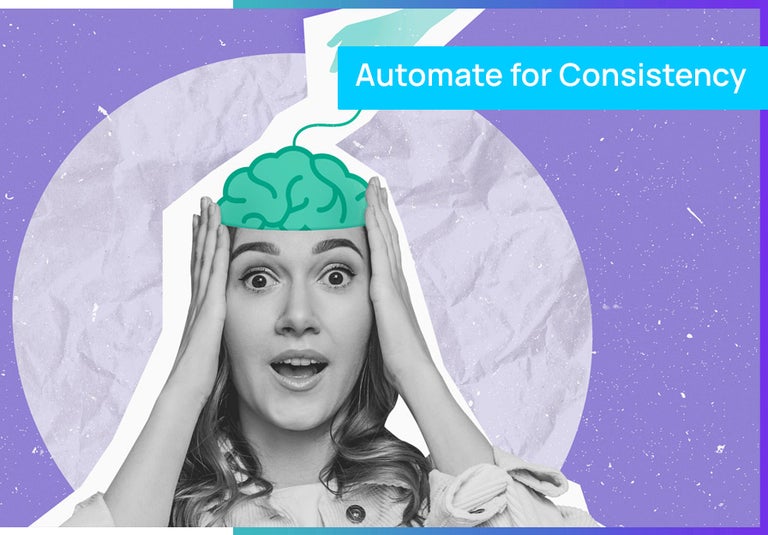
Consistency is the key to expert visibility.
The system doesn’t always reward brilliance, but it ALWAYS rewards repeatability.
An example of this is Stanford’s Top 2% Scientists list – quite a prestigious list by anyone’s account that you’d be lucky to be on. Yet the list ranked a journalist who wrote hundreds of news blurbs a year above actual Nobel Prize winners.
Merit didn’t matter, volume did.
That was the machine metric Stanford used to measure value – and it happens a lot in data analytics because it’s easier to quantify volume over quality. Another researcher made the cut by self-citing 97% of his own work! Cheaty but effective.
For those of us who understand analytics (remember those rarer success skills) – we know in the digital arena, when you automate for consistency, you win.
You can’t think in public once or twice, putting down a Nobel Prize winning idea and expect to attract 6 figure roles. But if you publish daily without fail, you absolutely will.
This is where it gets fun.
Use AI to automate your thinking process - not replace it.
- Tools like Stack.AI, Zapier, Made or whatever your favorite agent builder is can take your notes, structure them, resurface past ideas, and even push them to the right platforms.
- Build workflows that turn captured thoughts into publishable content. Let AI enhance your ideas with visuals, summaries, or citations. Streamline your second brain to reflect your expertise, then teach your systems to act on it.
- Even input-gathering can be automated: newsletters summarized, podcast notes scraped, books curated – save yourself time wherever you can.
Something incredible happens when you connect data, original thinking, and AI tools.
That’s when you stop being Jo Shmo the nobody and become the next big, prolific expert who shines brightly and takes up space with hard-hitting ideas.
Thinking in public tip 4: Automate your ideas. Republish them. Schedule them. Resurface them. Frequency = value - even if brilliance only happens once in a while.
The Future Belongs to Those Who Think in Public
You’re not invisible because you lack talent, you’re invisible because no one can see how you think. Your greatest asset is an untapped resource!
Thinking in public fixes that.

It’s the strategy that turns your daily brainpower into a career magnet. One that beams out across your company AND the internet, like a lighthouse in the cybersea - calling the right ships straight to your shore.
That’s how you shine smarter.
Here’s the play:
- Feed your brain the good stuff
- Capture what clicks
- Share what’s sharp
- Automate the rest
Do this right, and you’ll stop being a ‘pick-me’ candidate, always on the outside of success you just can’t seem to crack. You’ll be booked, busy, and in demand instead – because you’ll have the brightest brain in the room. Finally!
Ready to work where this kind of strategy gets rewarded?
Find your next role on Crossover








